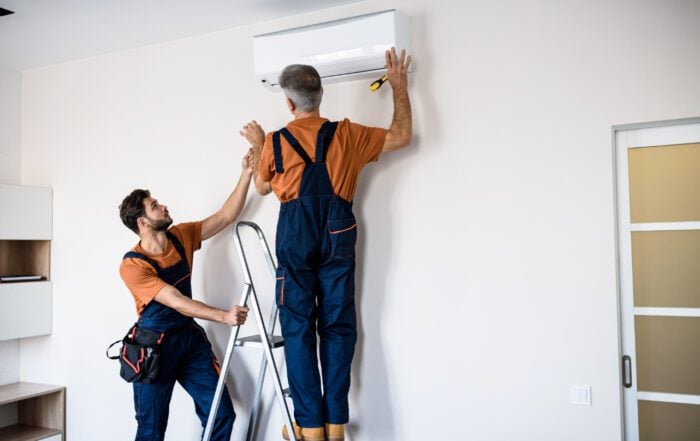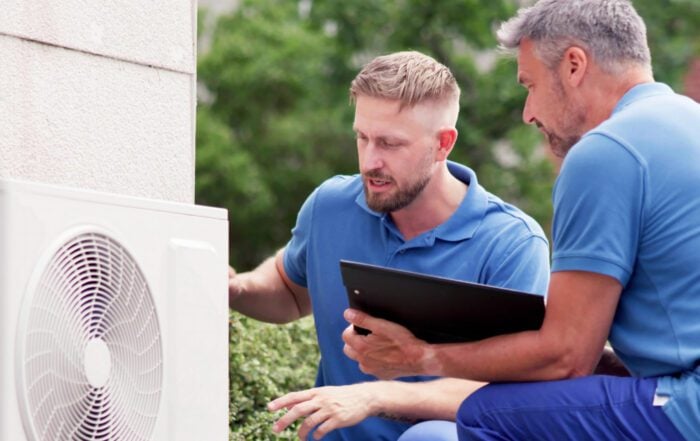It happens all the time: a storm arises (thunder or snow) and the power goes out. You’re stuck in the dark – and sometimes, the cold – for hours on end, wondering when the lights and television will come back on. And aside from having minimal entertainment, it’s also a safety issue. The news could be trying to alert you to essential information, the food in your refrigerator quickly spoils, and if your furnace runs on electric, it won’t be long before you’re out of heat. Of course, it’s not always a storm which knocks out the power. There is a multitude of reasons you might lose power to your home or office.
But there’s an easy solution to regaining temporary power: investing in a home generator. But that comes with its own set of problems: which kind should I buy? How much power should it provide? Do I need to maintain it? Is it going to be a pain to operate? What about storing it? We know that purchasing something which you have no experience with can be overwhelming, so we’ve put together this generator purchasing guide to get you started on your journey.
What’s Your Wattage?
When you are purchasing a generator, you need to decide if you want to power the whole home or just the essentials. Then you need to figure out what the total wattage is which can support that.
A Whole Home Generator vs. Powering the Essentials
Generators are sold by the amount of power output they provide, measured in watts. Everything in your home that runs on electricity is also measured in wattage – how much they intake and how much they output. So you need to decide how many of your essential appliances should receive power from the generator or if you want everything in your home to stay on and lit.
You’ll also want to take your budget into account. If you have a limited budget, you will most likely want to focus on a generator that will help you just power the essentials such as the refrigerator, furnace, and lights.
Figuring Out the Wattage for Your Home
A chart like this one can help you determine how much power each of your appliances needs to operate.
Once you have a list of the individual appliances you want to run and each of their wattages, add them together to get your total wattage needed.
Standby vs. Portable vs. Inverter
You have some different options when it comes to the type of generator that powers your home in the case of an outage.
Standby
These generators will supply power around the clock during a power outage – usually ranging between 5,000 to 20,000 watts. They kick in within seconds of a blackout and power the whole home and all of its appliances. When you opt for a standby generator, you install it permanently into your home. To operate it, you need to provide it with an already existing fuel supply such as propane gas. You also need to have a professional install these. Needless to say, this type of generator is going to be the most expensive of the three options.
Some of these models can even output lower noise levels and run their own diagnostic tests weekly to make sure they’re fully ready for your next power outage.
To learn more about preparing for a power outage, watch our short Power Outage Season video.
Portable
These are a little more restrictive in what they can provide, but they’re also the most affordable. They supply limited power for the home or office and usually run on unleaded gas. An added benefit to these is they can be brought along on camping trips or if you purchase a new home.
Some portable units offer auto-idle so the generator doesn’t run on full power when not in use and drain the fuel. There are also some that offer electrical starts when the battery is fully charged – you don’t have to deal with the exertion of pull-starts. And some even provide 12-volt outlets to charge wireless devices like cell phones.
Inverter
Inverter generators are similar to their portable siblings, but their engines are more complex – which means they’re going to be more costly. They generally run anywhere from a modest portable generator to a middle-of-the-road standby generator.
This type of generator also tends to be quieter since its output changes based on demand, and the exhaust system is a little more advanced. They also produce fewer emissions.
Don’t Forget the Transfer Switch
A transfer switch connects your generator to your circuit panel. Not using a transfer switch can be dangerous to utility workers and cause appliances to overload and fry. It can also damage the generator itself.
Transfer switches are different based on the type of generator on which you decide. Standby generators have a switch that automatically turns on when the power fails. Portable ones have a set of manual switches you’ll have to turn on yourself.
While it’s an added cost, you should always have a licensed contractor complete the installation. They can also walk you through the process of flipping the manual switches if you choose to go with a portable unit.
If you don’t want to spring for the transfer switch for your generator, make sure you get an interlock device (a licensed contractor still needs to install this). An interlock device works by covering the electrical panel’s cutoff switch. That way, when the power comes back on, the generator doesn’t continue to supply electricity as well.
Call Stack!
If you are considering purchasing a home generator and would like more information, or if you would like to request a quote for a whole-home generator installation, contact us today. We’ll help you create a space of safety and efficiency to save you money and give you a greater peace of mind.
Have Any Questions?
If this is an emergency please call 440-937-9134.
Otherwise, please feel free to call us or submit this form to schedule an appointment for service or request an estimate. We will contact you shortly!



